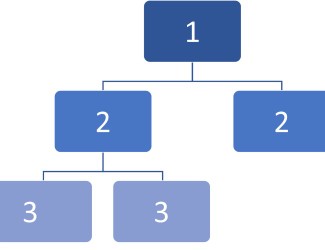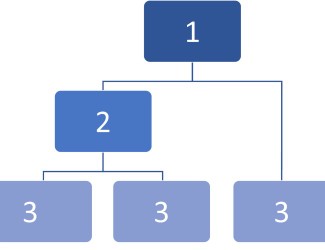Intended Audience and Contact Information
| Contact | Chief Data Officer, Office of the CIO |
|---|---|
| Intended Audience | Internal UBC |
| UDM Domain | Location |
| Data Standard ID | DS0100 |
Definition
Location Type is a categorization of Locations based on common characteristics or functions.
Location Hierarchy is the ordered geographic structure of Location Types.
Purpose
This standard aims to achieve consistency around the data collected for Location Types and Location Hierarchy and the format in which it is collected and stored.
This standard is derived by UBC and applies to all applications collecting Location Hierarchy data. Exceptions are listed in the Dispensation section.
Standard
The following are the accepted values for location types represented in their ordered geographic structure.
| Levels | Location Type | Definition |
|---|---|---|
| 01 | Location Group | The highest level of Location Hierarchy. See Campus & Other Location Groups Data Standard for more information. |
| 02 | Property | A portion of the Campus lands (including the Public Realm), a Campus Building, or an external site, owned or leased by the University. See UBC Property Data Standard for more information. |
| 03 | Complex | A grouping of Buildings as defined in the Campus Building Data Standard. See Building Complex Data Standard for more information. |
| 04 | Building | Any structure, including a usually roofed and walled structure and any affixed mechanical devices, built for temporary or permanent use, and that is used or intended for supporting or sheltering any use or occupancy. See Campus Building Data Standard for more information |
| 05 | Sub-building | A sub-building is a portion of a Building, as defined in the UBC's Building Data Standard. See Sub-Building Data Standard for more information. |
| 06 | Floor | A structural level in a Building or in a Building subdivision as defined in UBC's Building and Records Data Standards. See Campus Floor Data Standard for more information. |
| 07 | Unit | An enclosed space for a residential purpose. |
| 08 | Room | An enclosed or unenclosed space(s) or area(s) of a building designed to serve a specific purpose. See Campus Room Data Standard for more information. |
Location Hierarchy Rules:
- All locations must have level 01 defined.
- Room location types must define at minimum its relationship with floor, building, and location group levels.
- Unbalanced hierarchy is allowed, such that each branch of a location hierarchy can descend to different levels.

- Ragged hierarchy is allowed, such that location hierarchy levels can be skipped, provided that sufficient hierarchical contextualization is defined for a given use or purpose of the location.

Compliance
The above standard must be complied at every stage of the data lifecycle with the exception of any dispensations (see Dispensation section).
- All applications must collect data as recommended in this standard.
- Enterprise Data Integration must adopt this standard.
Reference Data Compliance for Data Integration
The use of accepted reference data values in this standard for data integration among applications must comply with the enterprise integration pattern of leveraging the reference data common service API (Application Programming Interface) published in UBC MuleSoft Exchange.
Any application that intends to access real-time, case-level reference data should have the application owner or manager complete and submit a Request API Access form.
Mapping of Invalid Values from System(s) of Record (SoR) to Common Services
A common service can only accommodate standard reference data enumerations that are available in the SoR as approved by the Data Governance Steering Committee or Data Trustee.
A reference data value that does not match any of the standard reference data value enumerations is considered 'invalid'. Any records from a SoR containing an invalid reference data value for a given data element or attribute must be mapped as an 'empty' value in common service(s). Where a reference data value may potentially have the same meaning as a standard enumeration but named differently in the system of record can be corrected to match the appropriate standard enumeration. Please consult with the EDG team in such cases.
Additional reference data values in a SoR that are not part of the standard reference data enumerations are to be omitted in the common service.
Dispensation
Legacy systems are exempt from this data standard. As systems are replaced, adoption of this standard is required. Examples of legacy systems are:
- Student Information System (SIS)
For any compliance questions or requests for a temporary dispensation, please contact the Enterprise Data Governance Team.